
Movie theaters and other entertainment venues have been hard-hit by the COVID-19 pandemic. As restaurants and retail have been allowed to open in limited capacity, entertainment venues have been among the last on the list to get back to business for many states. Even as reopenings have begun in many states, most studios have chosen to hold back blockbusters until they can be shown at full capacity. The U.S. release of Tenet over Labor Day weekend provided the first test of whether a big motion picture release would be tantalizing enough to lure Americans out of their homes and out to the movies. This Insight Flash examines the extent to which this test succeeded, which demographic groups were the most likely to show up to theatres, and which other businesses might see their fortunes rise as out-of-home entertainment grows.
The year-over-year change in the number of movie ticket purchases began its decline in late February when theatres were still open but many individuals feared crowded indoor spaces. By the week ending March 8, 2020, AMC Theatres, Century Theaters, Cinemark, and Regal Cinemas were all seeing year-over-year declines in transactions ranging from -25% to -50%.
Towards the end of August, the industry began reopening. The recovery may seem tepid at first. But when taking into account the fact that only about two-thirds of capacity is open at all, and those theatres that are open are limited in their available seats (with some states limiting them to as little as 25% of capacity and some theatres self-limiting beyond government guidelines), the signal becomes more hopeful that the U.S. population is eager to go back to cinemas when given the chance.
In the week ending August 23, 2020, AMC Theatres, Century Theaters, Cinemark, and Regal Cinemas all saw only a mid-single digits percentage of the transactions that they had a year ago. Those percentages almost doubled the following week, with Century Theaters seeing 6.5% of the previous year transactions, AMC Theatres seeing 10.2%, Regal Cinemas seeing 13.7%, and Cinemark seeing the strongest (relative) performance at 15%. Tenet’s release and additional openings in the week after that improved attendance only slightly, as Century Theaters caught up to competitors with a recovery of 12.3% of the prior year’s transactions, AMC improved by just over a percentage point to capture 11.4%, Regal Cinemas stayed largely flat with only 13.9%, and the leader Cinemark only at 16.3% of the prior year’s transactions. This implies that much of the return to theatres may be based on pent-up demand and a desire to get out of the house rather than driven by specific movie titles.
Change in Transactions by Week

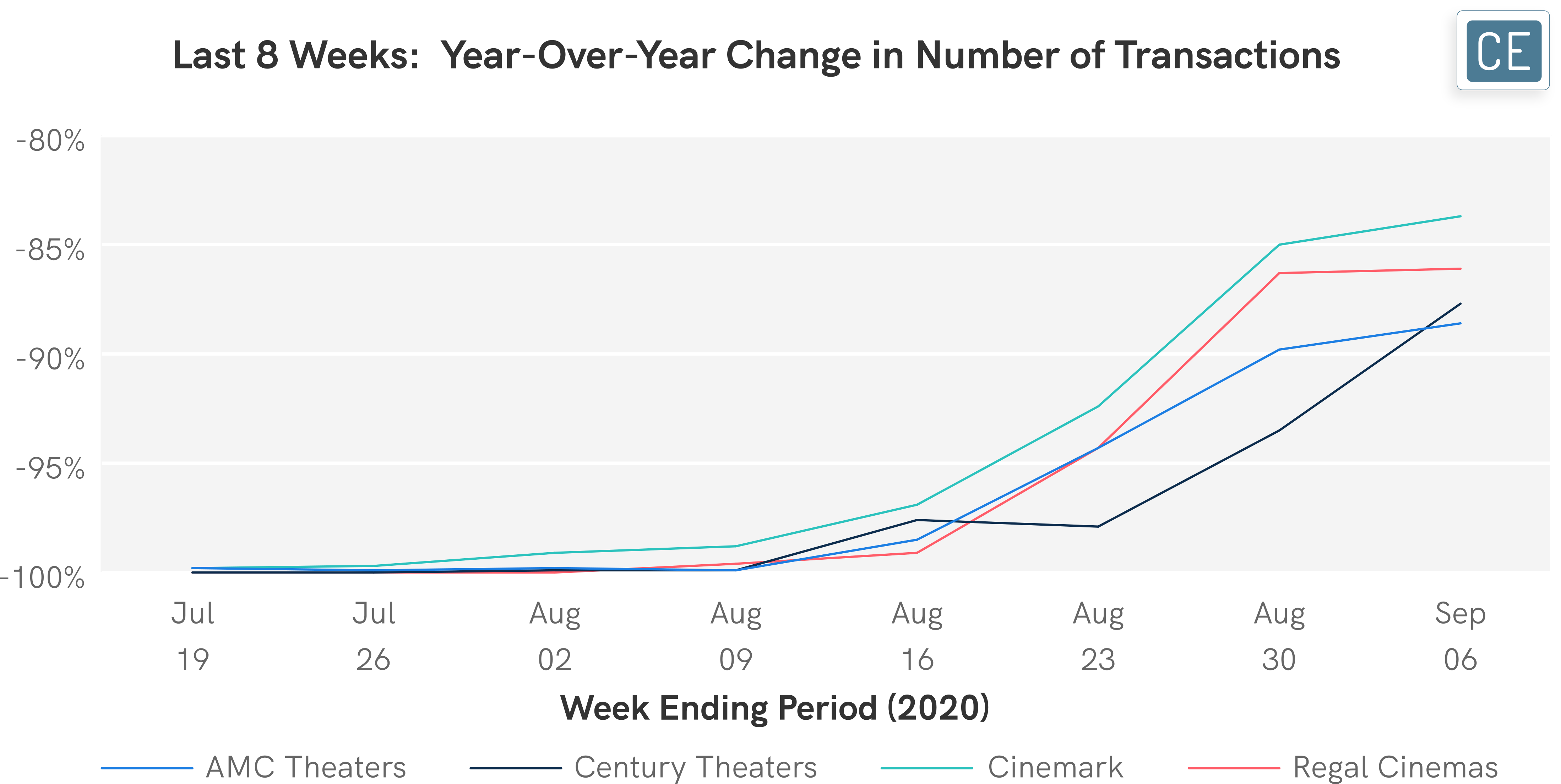
Even as more and more Americans are going back to the movies, the composition of that group has changed. Although the specific movie releases available will draw different audiences, some of the changes in trend seem to be independent of which films are screening, giving additional support to the idea that there is pent-up demand and a generalized desire to “go out.” Across several categories, as states reopened young people have been much more willing to participate in activities where they may come in contact with others. Going to the movies is no exception. Versus the week before Labor Day last year, the week before Labor Day this year saw an incremental +8.1% of 18-24 year olds and an incremental +5.2% of 25-34 year olds as a percent of total individuals spending at movie theatres. Additionally, households with kids made up an additional +3.4% of moviegoers. This is despite a lack of new films targeted to kids being shown on the big screen and competition with Mulan’s streaming release. The likely driver may be that parents working from home during the day, combined with cancelled summer camps and many schools starting remotely, is leading to an increased appetite for new activities. Finally, lower and middle income groups making less than $100,000 per year also made up an increased share of individuals, perhaps due to continued enhanced/extended unemployment benefits.
Change in Characteristics Among Moviegoers
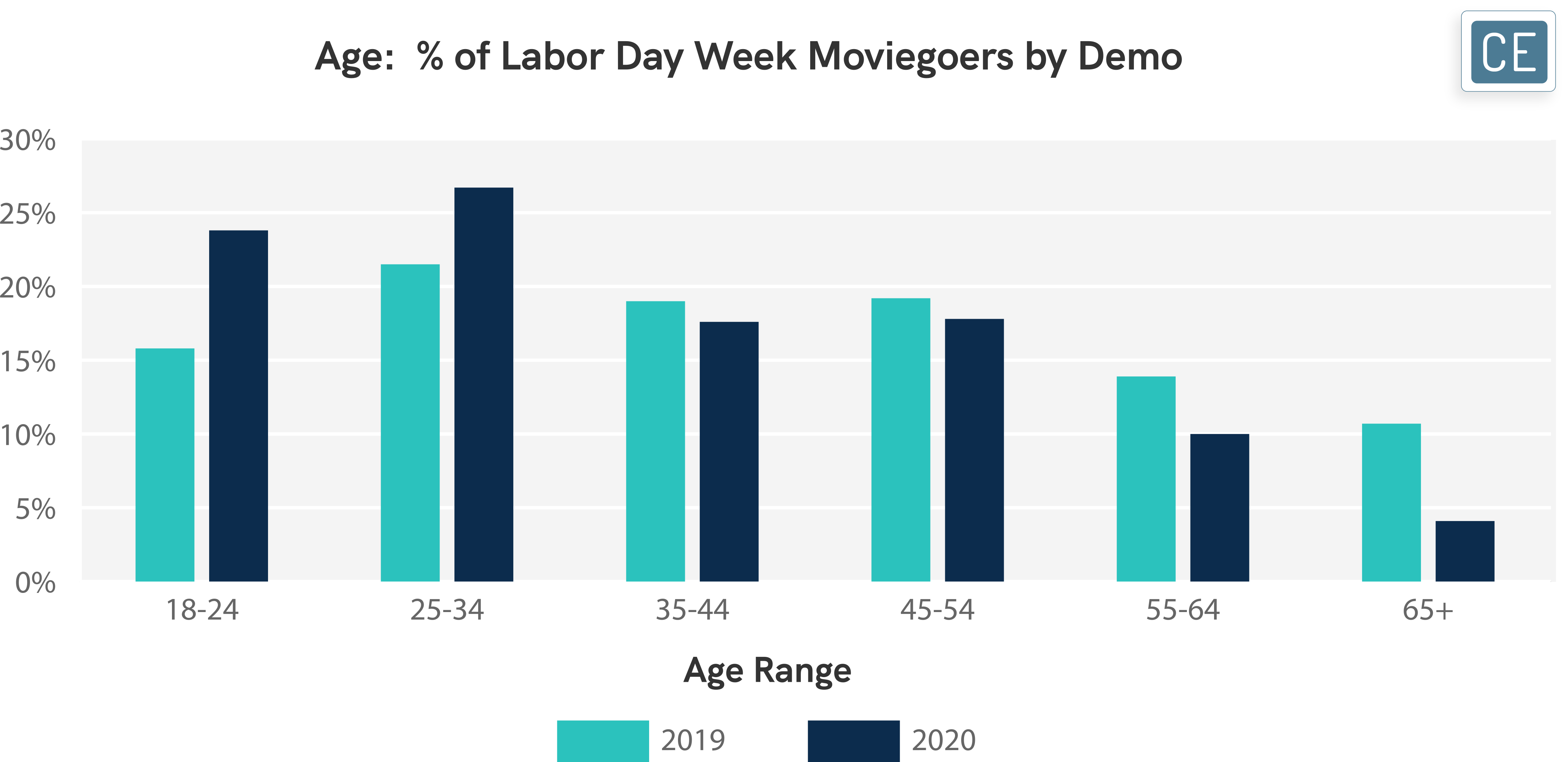
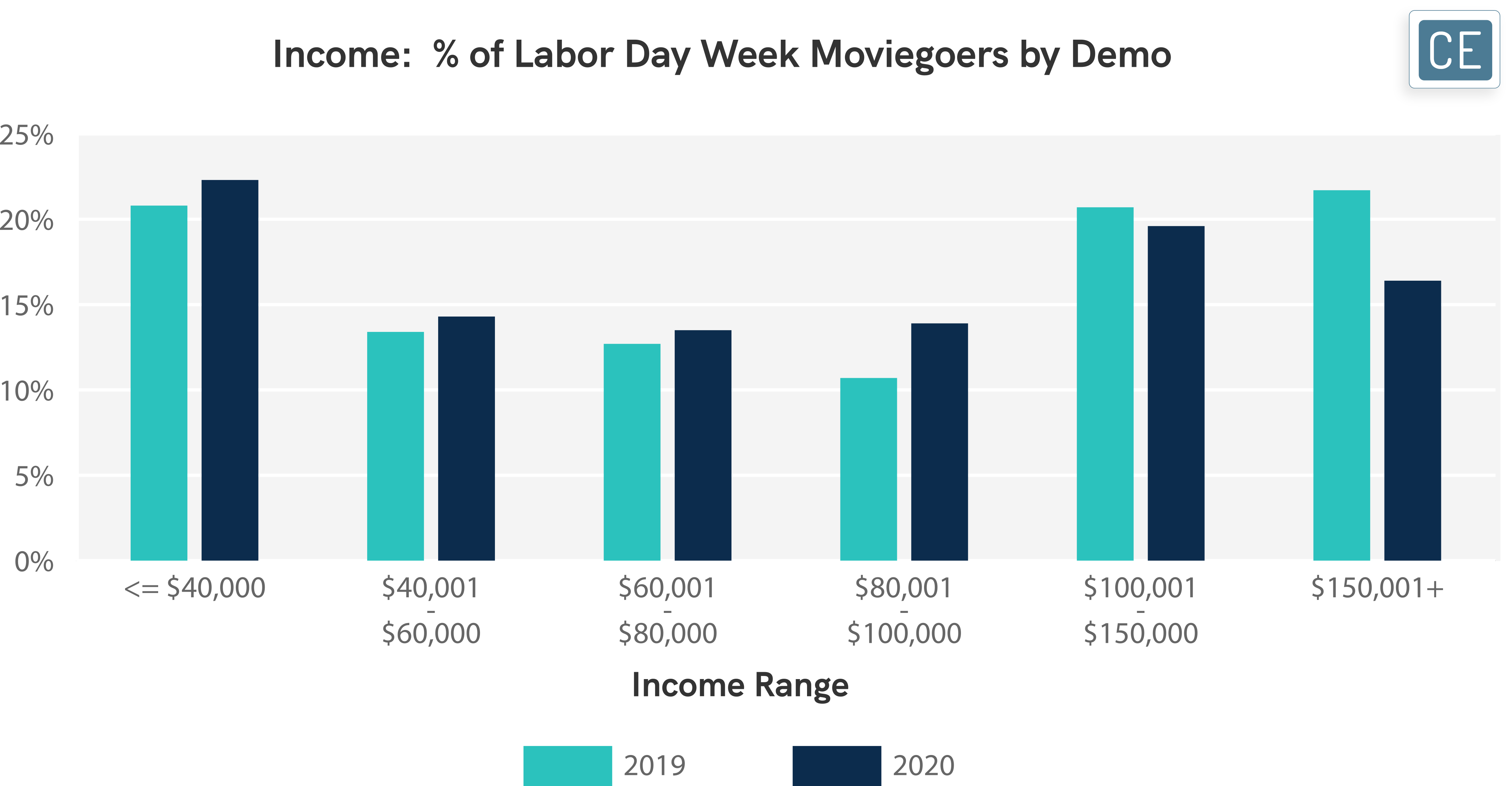
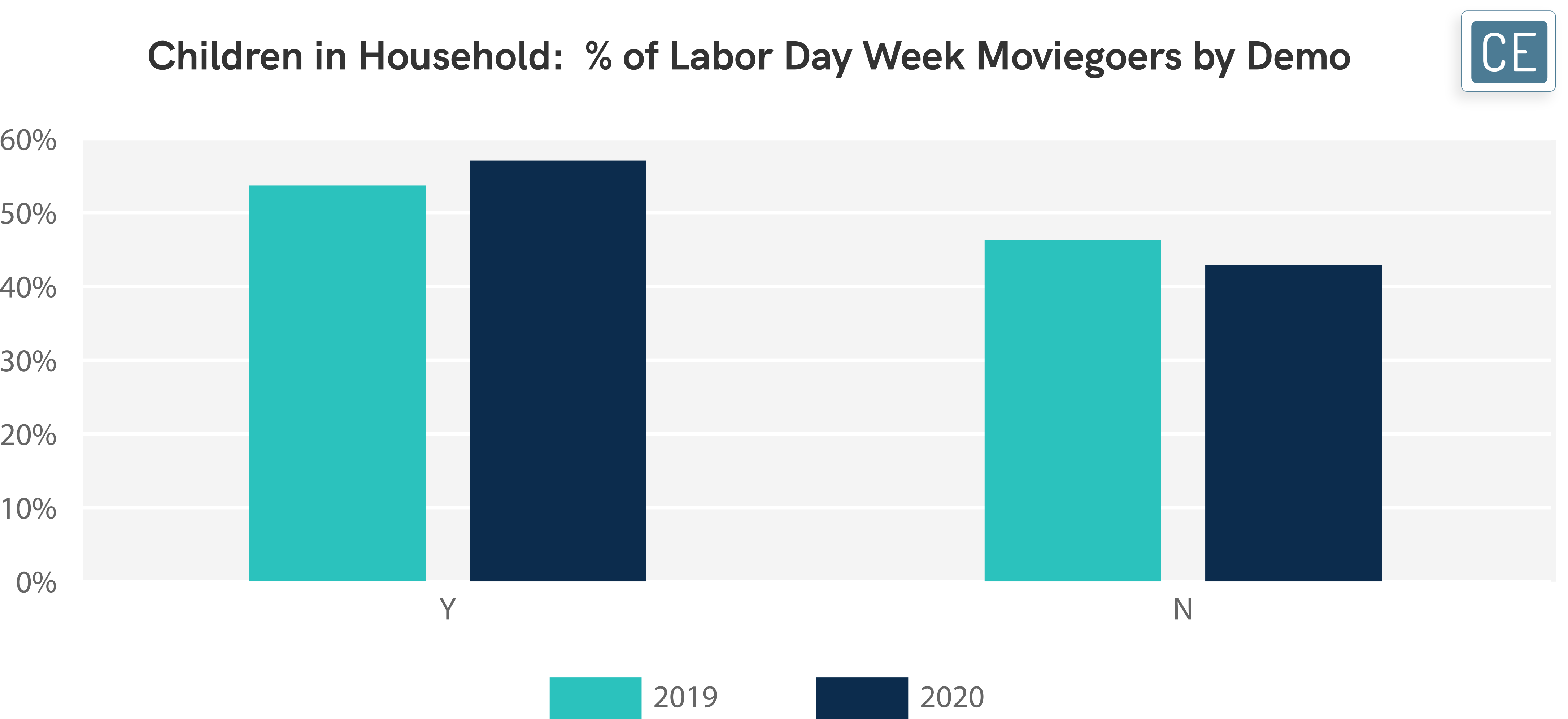
Note: Each demographic bucket’s percentage of individuals among those making at least one purchase at AMC Theatres, Century Theaters, Cinemark, or Regal Cinemas the week before Labor Day 2020 (8/31/20 – 9/6/20 vs. 2019 (8/26/19 – 9/1/19)
It’s not just the theatre operators that are hoping for a rebound in attendance. Several complementary companies also see a sales boost when Americans have a movie night out. Ticket distribution websites are unsurprisingly the most impacted, with Flixster and Fandango’s fates very tied to whether people are going to theatres. Mall retail, especially restaurants, are also seeing a strong tie to moviegoing. Tropical Smoothie Café, Cheesecake Factory, and Chili’s all saw a meaningful percentage of their customers in the week before Labor Day also spending at the movies on the same day, implying that a movie outing has add-on benefits for more than just the motion picture industry.
Brand Basket
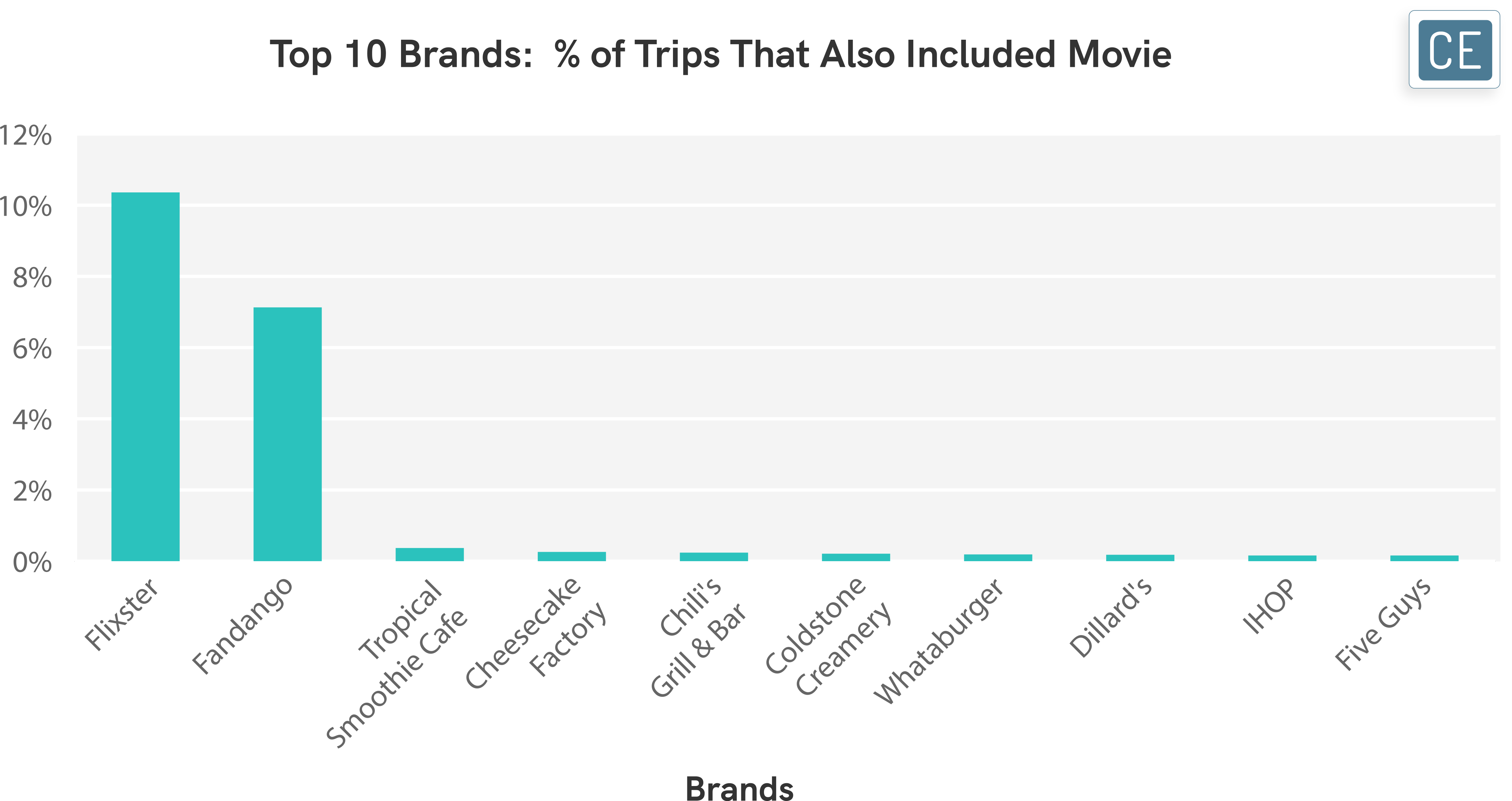
To learn more about the data behind this article and what Consumer Edge Research has to offer, visit www.consumer-edge.com.







Sign up to receive our stories in your inbox.
Data is changing the speed of business. Investors, Corporations, and Governments are buying new, differentiated data to gain visibility make better decisions. Don't fall behind. Let us help.













Sign up to receive our stories in your inbox.
Data is changing the speed of business. Investors, Corporations, and Governments are buying new, differentiated data to gain visibility make better decisions. Don't fall behind. Let us help.





